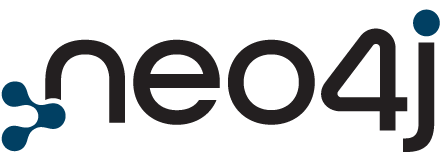DBMS > ArangoDB vs. Google Cloud Spanner vs. Virtuoso
System Properties Comparison ArangoDB vs. Google Cloud Spanner vs. Virtuoso
Please select another system to include it in the comparison.
| Editorial information provided by DB-Engines | ||||||||||||||||||||||||||||||||||||||||||||||||||||||||||||||||||||||||||||||||||||||||||||||||||
| Name | ArangoDB Xexclude from comparison | Google Cloud Spanner Xexclude from comparison | Virtuoso Xexclude from comparison | |||||||||||||||||||||||||||||||||||||||||||||||||||||||||||||||||||||||||||||||||||||||||||||||
| Description | Native multi-model DBMS for graph, document, key/value and search. All in one engine and accessible with one query language. | A horizontally scalable, globally consistent, relational database service. It is the externalization of the core Google database that runs the biggest aspects of Google, like Ads and Google Play. | Virtuoso is a multi-model hybrid-RDBMS that supports management of data represented as relational tables and/or property graphs | |||||||||||||||||||||||||||||||||||||||||||||||||||||||||||||||||||||||||||||||||||||||||||||||
| Primary database model | Document store Graph DBMS Key-value store Search engine | Relational DBMS | Document store Graph DBMS Native XML DBMS Relational DBMS RDF store Search engine | |||||||||||||||||||||||||||||||||||||||||||||||||||||||||||||||||||||||||||||||||||||||||||||||
| Secondary database models | Spatial DBMS | |||||||||||||||||||||||||||||||||||||||||||||||||||||||||||||||||||||||||||||||||||||||||||||||||
|
|
|
| |||||||||||||||||||||||||||||||||||||||||||||||||||||||||||||||||||||||||||||||||||||||||||||||
| Website | arangodb.com | cloud.google.com/spanner | virtuoso.openlinksw.com | |||||||||||||||||||||||||||||||||||||||||||||||||||||||||||||||||||||||||||||||||||||||||||||||
| Technical documentation | docs.arangodb.com | cloud.google.com/spanner/docs | docs.openlinksw.com/virtuoso | |||||||||||||||||||||||||||||||||||||||||||||||||||||||||||||||||||||||||||||||||||||||||||||||
| Developer | ArangoDB Inc. | OpenLink Software | ||||||||||||||||||||||||||||||||||||||||||||||||||||||||||||||||||||||||||||||||||||||||||||||||
| Initial release | 2012 | 2017 | 1998 | |||||||||||||||||||||||||||||||||||||||||||||||||||||||||||||||||||||||||||||||||||||||||||||||
| Current release | 3.11.5, November 2023 | 7.2.11, September 2023 | ||||||||||||||||||||||||||||||||||||||||||||||||||||||||||||||||||||||||||||||||||||||||||||||||
| License | Open Source | commercial | Open Source | |||||||||||||||||||||||||||||||||||||||||||||||||||||||||||||||||||||||||||||||||||||||||||||||
| Cloud-based only | no | yes | no | |||||||||||||||||||||||||||||||||||||||||||||||||||||||||||||||||||||||||||||||||||||||||||||||
| DBaaS offerings (sponsored links) Providers of DBaaS offerings, please contact us to be listed. | ||||||||||||||||||||||||||||||||||||||||||||||||||||||||||||||||||||||||||||||||||||||||||||||||||
| Implementation language | C++ | C | ||||||||||||||||||||||||||||||||||||||||||||||||||||||||||||||||||||||||||||||||||||||||||||||||
| Server operating systems | Linux OS X Windows | hosted | AIX FreeBSD HP-UX Linux OS X Solaris Windows | |||||||||||||||||||||||||||||||||||||||||||||||||||||||||||||||||||||||||||||||||||||||||||||||
| Data scheme | schema-free | yes | yes RDF - Quad (S, P, O, G) or Triple (S, P, O) XML - DTD, XML Schema DAV - freeform filesystem objects, plus User Defined Types a/k/a Dynamic Extension Type | |||||||||||||||||||||||||||||||||||||||||||||||||||||||||||||||||||||||||||||||||||||||||||||||
| Typing | yes | yes | yes | |||||||||||||||||||||||||||||||||||||||||||||||||||||||||||||||||||||||||||||||||||||||||||||||
| XML support | no | yes | ||||||||||||||||||||||||||||||||||||||||||||||||||||||||||||||||||||||||||||||||||||||||||||||||
| Secondary indexes | yes | yes | yes | |||||||||||||||||||||||||||||||||||||||||||||||||||||||||||||||||||||||||||||||||||||||||||||||
| SQL | no | yes | yes | |||||||||||||||||||||||||||||||||||||||||||||||||||||||||||||||||||||||||||||||||||||||||||||||
| APIs and other access methods | AQL Foxx Framework Graph API (Gremlin) GraphQL query language HTTP API Java & SpringData JSON style queries VelocyPack/VelocyStream | gRPC (using protocol buffers) API JDBC RESTful HTTP API | ADO.NET GeoSPARQL HTTP API JDBC Jena RDF API ODBC OLE DB RDF4J API RESTful HTTP API Sesame REST HTTP Protocol SOAP webservices SPARQL 1.1 WebDAV XPath XQuery XSLT | |||||||||||||||||||||||||||||||||||||||||||||||||||||||||||||||||||||||||||||||||||||||||||||||
| Supported programming languages | C# C++ Clojure Elixir Go Java JavaScript (Node.js) PHP Python R Rust | Go Java JavaScript (Node.js) Python | .Net C C# C++ Java JavaScript Perl PHP Python Ruby Visual Basic | |||||||||||||||||||||||||||||||||||||||||||||||||||||||||||||||||||||||||||||||||||||||||||||||
| Server-side scripts | JavaScript | no | yes | |||||||||||||||||||||||||||||||||||||||||||||||||||||||||||||||||||||||||||||||||||||||||||||||
| Triggers | no | no | yes | |||||||||||||||||||||||||||||||||||||||||||||||||||||||||||||||||||||||||||||||||||||||||||||||
| Partitioning methods | Sharding | Sharding | yes | |||||||||||||||||||||||||||||||||||||||||||||||||||||||||||||||||||||||||||||||||||||||||||||||
| Replication methods | Source-replica replication with configurable replication factor | Multi-source replication with 3 replicas for regional instances. | Chain, star, and bi-directional replication Multi-source replication Source-replica replication | |||||||||||||||||||||||||||||||||||||||||||||||||||||||||||||||||||||||||||||||||||||||||||||||
| MapReduce | no | yes | yes | |||||||||||||||||||||||||||||||||||||||||||||||||||||||||||||||||||||||||||||||||||||||||||||||
| Consistency concepts | Eventual Consistency Immediate Consistency OneShard (highly available, fault-tolerant deployment mode with ACID semantics) | Immediate Consistency | Immediate Consistency | |||||||||||||||||||||||||||||||||||||||||||||||||||||||||||||||||||||||||||||||||||||||||||||||
| Foreign keys | yes | yes | yes | |||||||||||||||||||||||||||||||||||||||||||||||||||||||||||||||||||||||||||||||||||||||||||||||
| Transaction concepts | ACID | ACID | ACID | |||||||||||||||||||||||||||||||||||||||||||||||||||||||||||||||||||||||||||||||||||||||||||||||
| Concurrency | yes | yes | yes | |||||||||||||||||||||||||||||||||||||||||||||||||||||||||||||||||||||||||||||||||||||||||||||||
| Durability | yes | yes | yes | |||||||||||||||||||||||||||||||||||||||||||||||||||||||||||||||||||||||||||||||||||||||||||||||
| In-memory capabilities | no | yes | ||||||||||||||||||||||||||||||||||||||||||||||||||||||||||||||||||||||||||||||||||||||||||||||||
| User concepts | yes | Access rights for users, groups and roles based on Google Cloud Identity and Access Management (IAM) | Fine-grained Attribute-Based Access Control (ABAC) in addition to typical coarse-grained Role-Based Access Control (RBAC) according to SQL-standard. Pluggable authentication with supported standards (LDAP, Active Directory, Kerberos) | |||||||||||||||||||||||||||||||||||||||||||||||||||||||||||||||||||||||||||||||||||||||||||||||
More information provided by the system vendorWe invite representatives of system vendors to contact us for updating and extending the system information, | ||||||||||||||||||||||||||||||||||||||||||||||||||||||||||||||||||||||||||||||||||||||||||||||||||
Related products and servicesWe invite representatives of vendors of related products to contact us for presenting information about their offerings here. | ||||||||||||||||||||||||||||||||||||||||||||||||||||||||||||||||||||||||||||||||||||||||||||||||||
| More resources | ||||||||||||||||||||||||||||||||||||||||||||||||||||||||||||||||||||||||||||||||||||||||||||||||||
| ArangoDB | Google Cloud Spanner | Virtuoso | ||||||||||||||||||||||||||||||||||||||||||||||||||||||||||||||||||||||||||||||||||||||||||||||||
| DB-Engines blog posts | The Weight of Relational Databases: Time for Multi-Model? | |||||||||||||||||||||||||||||||||||||||||||||||||||||||||||||||||||||||||||||||||||||||||||||||||
| Recent citations in the news | ArangoDB raises $10 million for NoSQL database management Top Open Source Graph Databases ArangoDB Boosts Performance and Usability Across Search, Graph, and Analytics with Release of ArangoDB 3.11 Graph, machine learning, hype, and beyond: ArangoDB open source multi-model database releases version 3.7 ArangoDB advances graph database fortunes with new funding provided by Google News | Google Cloud Introduces HDD Tier for Spanner Database, Cutting Cold Storage Costs by 80% New features make Google's Spanner a database for AI Google Cloud adds graph processing to Spanner, SQL support to Bigtable Google Cloud adds graph and vector search features to Spanner database Google’s Plan to Make GCP ‘The Best Cloud for Machine Learning’ provided by Google News | Figure 2. DAR detailed architecture Fig. 1. Logical architecture of the OPENNESS platform. provided by Google News | |||||||||||||||||||||||||||||||||||||||||||||||||||||||||||||||||||||||||||||||||||||||||||||||
Share this page




